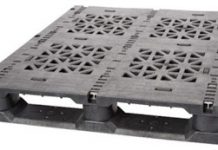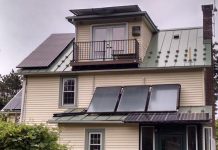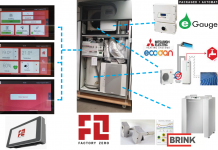by Tom Konrad CFA
Many people still think of green technologies as costly. But cost is never the main barrier to efficiency measures, which often can boast internal financial returns far higher than even risky junk bonds. The barriers against energy efficiency and legion, but cheif among them are the small size of the investments and split incentives, where the person making the investment is not the same person who reaps the rewards.
A Colorado based NGO, the International Center for Appropriate and Sustainable Technology (ICAST), recently launched a charity-finance hybrid to overcome this problem of split incentives.
The hybrid includes a charity and crowdfunding platform, Project Sunlight, as well as a new community development financial institution, the Triple Bottom-Line (TBL) Fund. By combining donations and social-impact investments, ICAST hopes to increase the pool of low-interest money available to fund these retrofits.
The idea of making affordable housing energy efficient is an alluring one. After all, more efficient apartments not only save tenants money, but also can improve their health, safety and comfort. At the same time, landlords benefit from higher property values, lower turnover, higher occupancy and tenants’ better ability to pay rent. And, of course, everyone benefits from reduced greenhouse gas emissions.
 Ravi Malhotra (left) and ICAST staff discuss energy efficiency options with the owner of an affordable housing complex. |
Many energy-efficiency upgrades also pay for themselves in energy savings over the long run: ICAST’s retrofits generally pay off in seven or eight years, with some improvements, such as lighting, paying back in as little as two years.
But it’s hard to find many low-income rental building owners willing to pay the upfront costs. Many low-income apartments suffer from a classic split-incentive problem: the landlord pays for the building upgrades, but the tenants receive most of the benefits.
It takes low-interest loans to entice landlords, and ICAST’s ability to do these projects is limited by the supply of investment funds available at low interest rates. It’s Economics 101, says Ravi Malhotra, executive director of ICAST: “The number of owners we can sign up at 4% is much smaller than the number of owners we can sign up at 2%.”
For ICAST, the magic number interest rate is around 3%. “We can find as many projects as we have capacity to do as long as we can offer owners funds below 4%,” Malhotra adds.
A financing conundrum
The catch is that ICAST needs both a loan loss reserve and money to fund its operations. Together, these cost about 2.5% per year.
A quick check of the math shows that won’t work: if ICAST gets money at 3% and loans it out at “below 4%”, there wouldn’t be enough room to both run ICAST and fund the reserve.
In other commercial settings, a host of government programs and utility incentives exist to bridge the gap, but the unique nature of commercial property for residential use leaves most low-income housing to fall through the cracks.
Only a handful of US utilities offer rebates for low-income housing, Malhotra says. Some government programs have historically supported weatherization upgrades for affordable housing, at least, but these funds – which have only served about 5% of market demand over the last 30 yeaars – are decreasing.
Leveraging investments with charity
The solution, according to Malhotra, is to sell loans that are essentially subsidized by charity instead of by government. Donations to Project Sunlight will pay for a loan loss reserve and ICAST’s operating expenses. This will enable accredited investors backing the TBL Fund to earn an annual return of 3% over five years.
Although 3% interest is a fairly low rate, Malhotra thinks many investors will be interested because of the outsized social impact, so long as the money is safe.
And there’s some evidence investors would consider these loans to be safe. Over the last eight years – including during the 2008 housing crisis – ICAST has completed more than $10m worth of commercial multifamily housing upgrades without any defaults. Current “green” loans have default rates of less than 0.5%, according to the TBL website.
Additional safety comes from the 5% loan loss reserve, in addition to a 20% loan loss reserve provided by the state of Colorado for projects in that state. The underwriting process includes screening applicants against risky borrowers, as well as due diligence aimed at preventing upgrades that do not provide real benefits.
Is the investor appetite there?
Even before its official launch, the TBL Fund is already catching the attention of some impact investors. By the end of 2014, it had garnered $500,000 in loan funding from investors, and Project Sunlight had received $44,000 in charitable donations.
It remains to be seen if other investors will step up – and if Project Sunlight will receive enough donations to match the demand for investment in the TBL Fund. Malhotra thinks ICAST will need 10% of its funds to come in the form of donations to be able to offer the 3% return rate for the rest.
One idea would be to ask investors if they would be willing to donate 10% of their investment to the charity. No individual has yet both invested and made a donation but, Malhotra says, “All we can do is ask.”
Tom Konrad is a freelance writer and portfolio manager specializing in clean energy and income investments.
An earlier version of this article was first published on The Guardian, and is republished with permission. Further reprints require permission from The Guardian.








